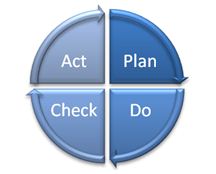Managing internal audit
Heads of internal audit and senior internal audit managers have management responsibilities. Like all managers within the organisation there is a need to:
- Understand what stakeholders and customers want
- Agree objectives and priorities
- Plan activities
- Establish resources and processes, and
- Monitor performance, making corrections to keep things on track if necessary.
This management process can be summarised quite simply as:

This section looks at the plan-do-check-act cycle from an internal audit management perspective.
NEW: Global knowledge briefAudit team transformationLearn additional strategies to retain talent by using talent to its fullest, and build a talent pipeline of multi-generational, multi-departmental sources to create “audit team transformation”. Published: May 2019 Approaches to upskilling for internal auditInnovative thinking, communication, technology, and other skills that support innovation and agility are in short supply. How can chief audit executives help develop these critical skills in their staff members? Published: January 2019 |
Global perspectives and insight reportTop risks faced by chief audit executivesAs the need exists for internal audit to provide more value and strategic support, auditors must ensure that their work aligns with all significant risks, especially strategic and operational risks. Learn how to effectively manage the top five risks that chief audit executives face. Published: May 2018 |
Head of internal audit?
Sometimes you need more than technical guidance. If you work at a senior level, why not consider joining Audit Leaders? This is a knowledge-sharing and networking group that will connect you with people who understand the challenges you face.








